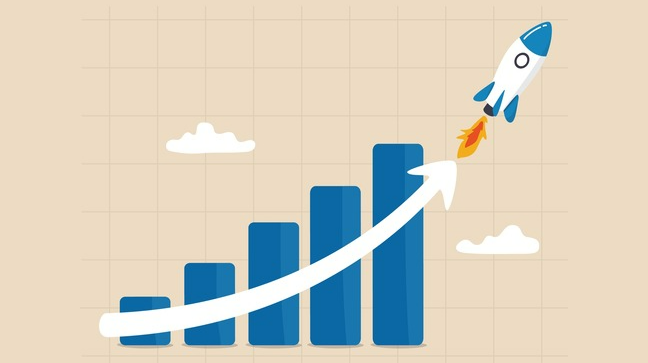Albert Einstein is credited with calling compound interest “the eighth wonder of the world”.
And Benjamin Franklin famously ran a 200-year experiment to prove the power of compound interest by donating 1,000 British pounds to Boston and Philadelphia. Nearly 200 years later, both investments are now worth millions of dollars.
But what is compound interest and how exactly does it work?
Simply put, compound interest is the process of your money making money, and then that money making even MORE money.
Let’s discuss how to calculate compound interest, how the effect of time makes it so powerful, and how to use compound interest to plan your investments.
What is compound interest?
Compound interest refers to the process of earning interest on the principal amount of an investment and the interest earned on the accrued interest on that investment.
In other words, the interest you earn also earns interest in turn. This combined effect allows your initial investment to grow and earn more every year.
Compound interest is the foundation of your wealth growth, as you can earn more and more every year you keep investing. But it also works the other way around, as bank loans and credit cards also increase the interest on the debt, forcing you to pay more and more over time.
Here is a short example:
If you invest $10,000 in a Certificate of Deposit (CD) with an annual interest rate of 5%, you will earn $500 in the first year. But in the second year, you will earn the same $500 plus 5% per annum on the $500 you earned in the previous year, and in the second year, you will get $525. This continues every year of your investment, adding to your balance sheet and earning more and more interest as you continue to invest.
Read more: CD Cost Calculator: How much is your CD worth?
How does compound interest work?
Compound interest is made up of:
- amount of investment (or amount of debt)
- interest rate
- time period
- interest frequency
In the case of an investment, interest is accrued on the principal amount, which is paid periodically (daily, monthly, annually, etc.) and added back to the principal amount.
Then, during the next cycle, you earn interest on both the principal of the investment and the interest paid, increasing your profits.
The power of compound interest is the frequency with which you earn interest and the amount of time you allow the investment to grow. This can lead to exponential returns, making more money each year even if you don’t invest any more money.
Read more: Top tips to help you get started investing
How is compound interest calculated?
Compound interest is calculated by multiplying the principal amount by one plus the interest rate to the power of the number of interest periods minus one.
What to expect?
Here it is in formula form:
= P[(1+IR)N-1]
- P = principal amount
- PS = interest rate
- N = number of interest periods
Still not easier?
Okay, here’s an example;
If you invest $1,000 over 5 years at 5% interest, here’s how much you’ll get:
1000 dollars[(1+0.05)5-1] = $1,000[1.27628] = $1276.28
Understandably?
Okay, here’s an easy way: use our compound interest calculator instead.
How Compounding Frequency Works
Compound interest is usually calculated annually, but the more frequently interest is compounded, the higher the amount of interest you earn on your investment.
For example, if your investment or savings account accumulates monthly, you will add interest every month. So, if you deposit $10,000 at a 5% rate that accrues monthly, here’s how it compares to compounding annually:
- $10,000 investment monthly for 5 years = $12,762.82.
- $10,000 investment annually for 5 years = $12,833.59.
While the difference may not seem like much, you just made another $70 doing nothing. And if the interest rate were daily, you would earn almost $80 more.
For this reason, you should always give preference to interest-bearing investments that accrue with the greatest frequency. Daily is generally the best option, and yearly provides the least profit.
Compound interest and time
The most important factor that makes compound interest a powerful investment concept is time. The longer your investments remain at rest, the higher the return.
Like, exponentially higher!
Let’s take a look at compound interest over a longer period of time.
You have three investments: investment A, investment B and investment C. The conditions of each of them are as follows:
- Investment A: $10,000 invested at 5% for 10 years compounded annually.
- Investment B: $10,000 invested at 5% for 20 years compounded annually.
- Investment C: $10,000 invested at 5% for 30 years compounded annually.
At the end of each semester, this is what the investment looks like (and yes, I used a calculator for these results):
- Investment A: $16,288.95 including $10,000 in original principal and $6,288.95 in interest earned over 10 years.
- Investment B: $26,532.98 including $10,000 in original principal and $16,532.98 in interest earned over 20 years.
- Investment C: $43,219.42 including $10,000 of original principal and $33,219.42 of interest earned over 30 years.
As you can see from this example, Investment B did not return twice as much over the next 10 years, but almost tripled! Investment C earned almost 5 times the interest of investment A, although it was invested 3 times longer.
The longer you invest, the more powerful compounding becomes.
Compound Interest vs. Simple Interest
Some financial accounts pay simple interest instead of compound interest, which only pays interest on your initial investment. This is much worse for investors, but much better for debt.
Under the simple interest rate, you can invest $10,000 at 5% per annum. At the end of the year, you will receive between $10,500 and $10,000 representing your original principal plus $500 in interest. In the second year, you will earn the same $500 and continue to do so every year without any additional interest.
Compound interest adds interest to your balance, allowing you to earn more every year. As shown earlier in this article, investing the same $10,000 at 5% per annum will earn you $500 in the first year, $525 in the second year, and more in each subsequent year of investment.
In general, compound interest is far superior to simple interest for investments, but simple interest can save you money on loans and other debt.
Compound Interest and the “Rule of 72”
This is a favorite rule of accountants, but it can be a good help for mere mortals. Rule 72 gives a rough idea of how long it will take an investment to double its value, based on a given interest rate.
It works by dividing 72 by the rate of return on your investment.
For example, let’s say you invest $10,000 at 6% and want to know how long it will take to double your investment. Dividing 72 by 6% gives you 12. This means it will take 12 years for the value of your investment to double at that rate of interest.
The Rule of 72 won’t help you with more complex calculations, but getting an answer to the question “when will my investment double” is a very common question among investors. And if you ever have this question about an investment you are considering or already have, you can use the rule to find the answer for yourself.
How Early Investing Matters (Real Life Example)
You may have heard that investing at a young age is much better than waiting. Well, it is true, and we have calculated the numbers to show you how important your age can be when investing.
Michael, Jennifer, and Sam have been investing for 10 years, and thanks to their incredible investment luck, they have each consistently earned the same average annual return (7%) until age 65. The only difference between these investors is the year they started squandering their funds.
Michael saved $1,000 a month from the time he was 25 until he was 35. He then stopped saving, but left his money in his investment account, where it continued to accumulate at a rate of 7% until he did not retire at age 65.
Jennifer abstained and didn’t start saving until she was 35. She saved $1,000 a month from age 35 to age 45. Like Michael, she left a balance in her investment account, where it continued to accumulate at a rate of 7.% until the age of 65.
Sam didn’t manage to invest until he was 45. However, he invested $1,000 a month for 10 years, stopping his savings at the age of 55. He then also left his money to accumulate at a rate of 7% until his 65th birthday.
Michael, Jennifer and Sam accumulated the same amount of $120,000 each over 10 years.
Unfortunately for Jennifer, and even more so for Sam, their final balance was very different.
- Michael: $1,444,969
- Jennifer: $734,549
- Sam: $373,407
How to use compound interest to your advantage
Compound interest is one of your investment best friends. But it is also something of an enemy when you borrow money. This is because it works the same way both ways, except that in the case of investments, you are on the receiving end of the interest equation. With a loan, you pay, which means that the interest will cost you more.
There are ways to play compound interest when it comes to both investments and loans.
To use compound interest to your advantage with investments:
- Choose investments that have the most compound interest rates possible. Daily or constantly is the best choice.
- Invest ASAP. Interest calculation works best over longer periods.
- Let “APY” be your guide. This is the annual percentage yield that reflects the interest you earn, including compound interest. This is the best way to compare one percentage investment with another.
To use compound interest to your advantage with loans:
- Pay special attention to “APR” This is the annual interest rate on the loan. It reflects not only the interest paid to the lender, but also any fees you may pay in connection with obtaining or servicing the loan. In the lending industry, fixed interest rates like 17.99% don’t mean as much as an annual rate of 19.12%. The latter is the effective rate that you actually pay.
- Loan terms should be as short as possible. In the same way that compound interest works to your advantage over longer investment periods, it works against you when it comes to borrowing.
- Make additional payments. Making additional principal payments will not lower your APR, but will reduce the amount of interest you will pay over the life of the loan, as well as the term of the loan.
Once you understand how compound interest works, you can make it your friend whether you’re investing or borrowing.
Summary
When you earn compound interest, you earn interest on your interest. And the sooner you start, the better. Spending more time on compound interest will help you grow your investment exponentially.
But it also works the other way around, and your debt can accrue compound interest, adding to your balance over time, so finding a good debt repayment strategy can help you save a lot of money.
Featured Image: eamesBot/Shutterstock.com


